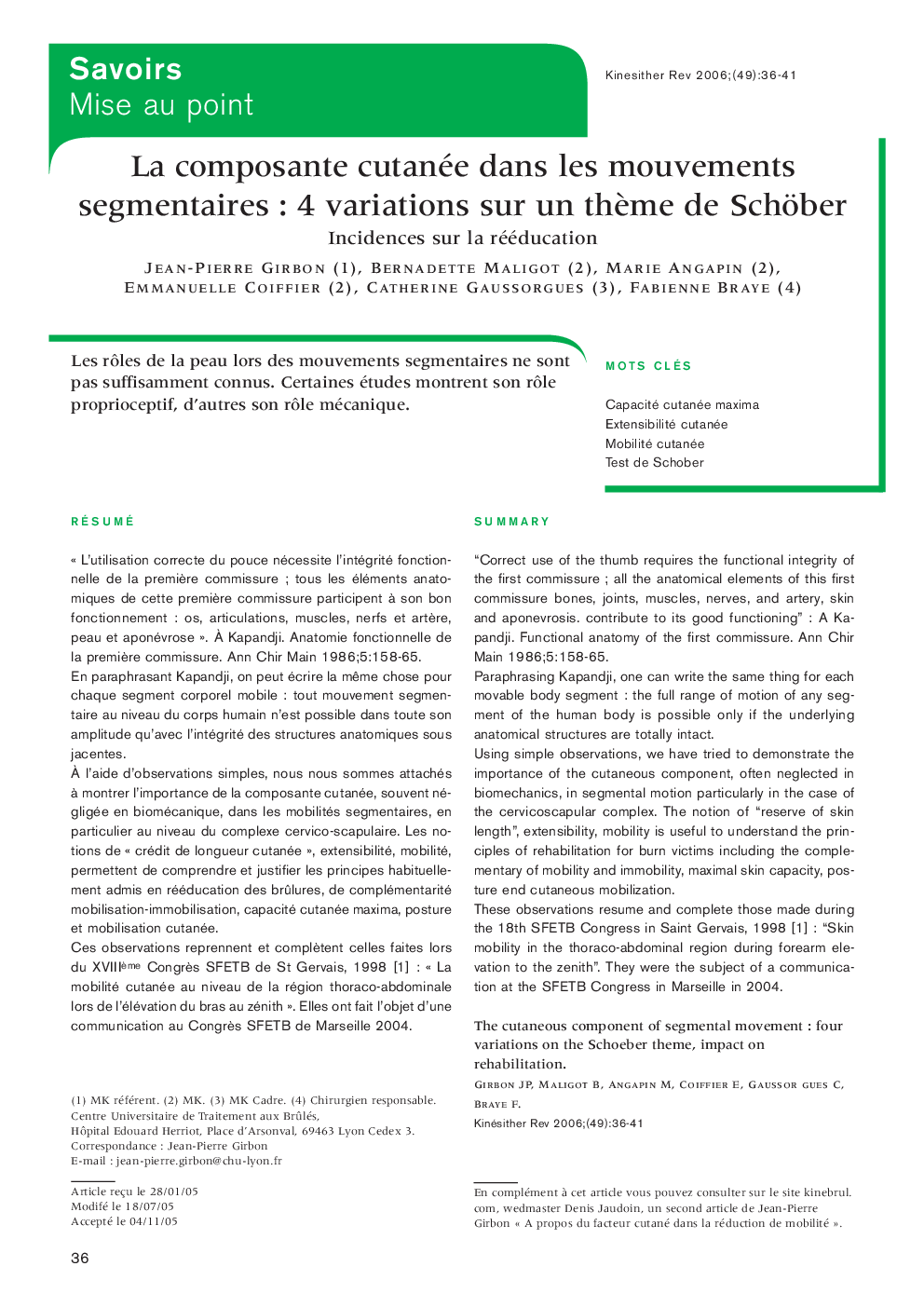| Article ID | Journal | Published Year | Pages | File Type |
|---|---|---|---|---|
| 2624813 | Kinésithérapie, la Revue | 2006 | 6 Pages |
Résumé« L’utilisation correcte du pouce nécessite l’intégrité fonctionnelle de la première commissure ; tous les éléments anatomiques de cette première commissure participent à son bon fonctionnement : os, articulations, muscles, nerfs et artère, peau et aponévrose ». À Kapandji. Anatomie fonctionnelle de la première commissure. Ann Chir Main 1986;5:158-65.En paraphrasant Kapandji, on peut écrire la même chose pour chaque segment corporel mobile : tout mouvement segmentaire au niveau du corps humain n’est possible dans toute son amplitude qu’avec l’intégrité des structures anatomiques sous jacentes.À l’aide d’observations simples, nous nous sommes attachés à montrer l’importance de la composante cutanée, souvent négligée en biomécanique, dans les mobilités segmentaires, en particulier au niveau du complexe cervico-scapulaire. Les notions de « crédit de longueur cutanée », extensibilité, mobilité, permettent de comprendre et justifier les principes habituellement admis en rééducation des brûlures, de complémentarité mobilisation-immobilisation, capacité cutanée maxima, posture et mobilisation cutanée.Ces observations reprennent et complètent celles faites lors du XVIIIème Congrès SFETB de St Gervais, 1998 [1] : « La mobilité cutanée au niveau de la région thoraco-abdominale lors de l’élévation du bras au zénith ». Elles ont fait l’objet d’une communication au Congrès SFETB de Marseille 2004.
Summary“Correct use of the thumb requires the functional integrity of the first commissure ; all the anatomical elements of this first commissure bones, joints, muscles, nerves, and artery, skin and aponevrosis. contribute to its good functioning”: A Kapandji. Functional anatomy of the first commissure. Ann Chir Main 1986;5:158-65.Paraphrasing Kapandji, one can write the same thing for each movable body segment : the full range of motion of any segment of the human body is possible only if the underlying anatomical structures are totally intact.Using simple observations, we have tried to demonstrate the importance of the cutaneous component, often neglected in biomechanics, in segmental motion particularly in the case of the cervicoscapular complex. The notion of “reserve of skin length”, extensibility, mobility is useful to understand the principles of rehabilitation for burn victims including the complementary of mobility and immobility, maximal skin capacity, posture end cutaneous mobilization.These observations resume and complete those made during the 18th SFETB Congress in Saint Gervais, 1998 [1] : “Skin mobility in the thoraco-abdominal region during forearm elevation to the zenith”. They were the subject of a communication at the SFETB Congress in Marseille in 2004.
